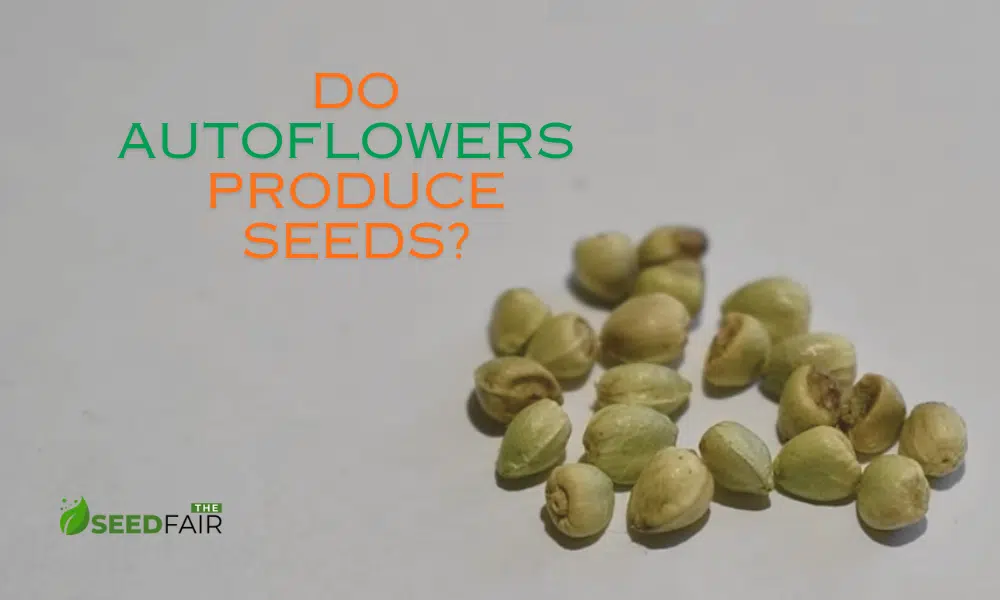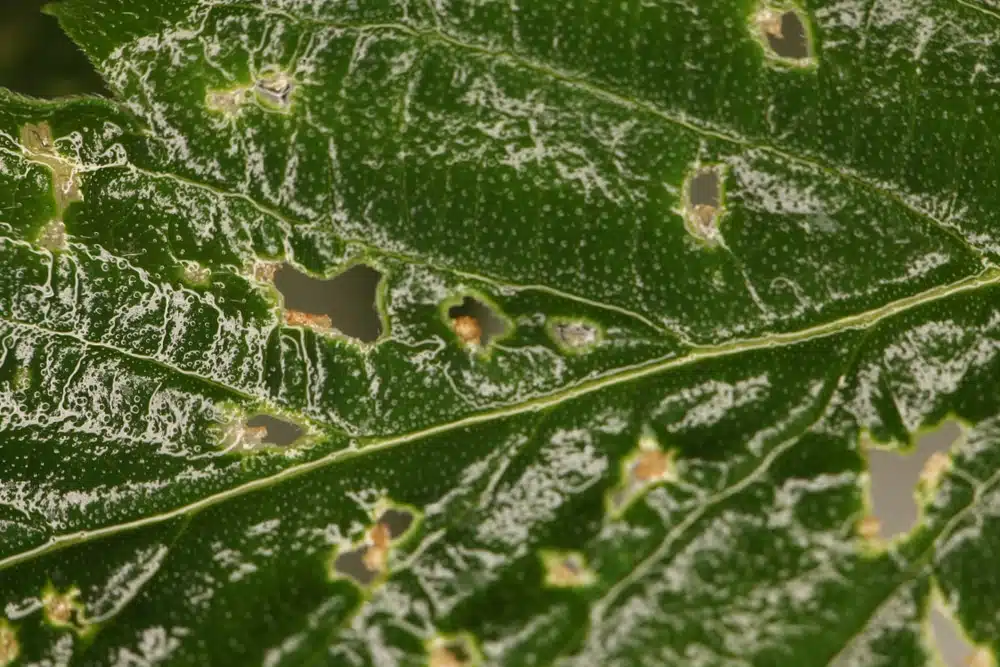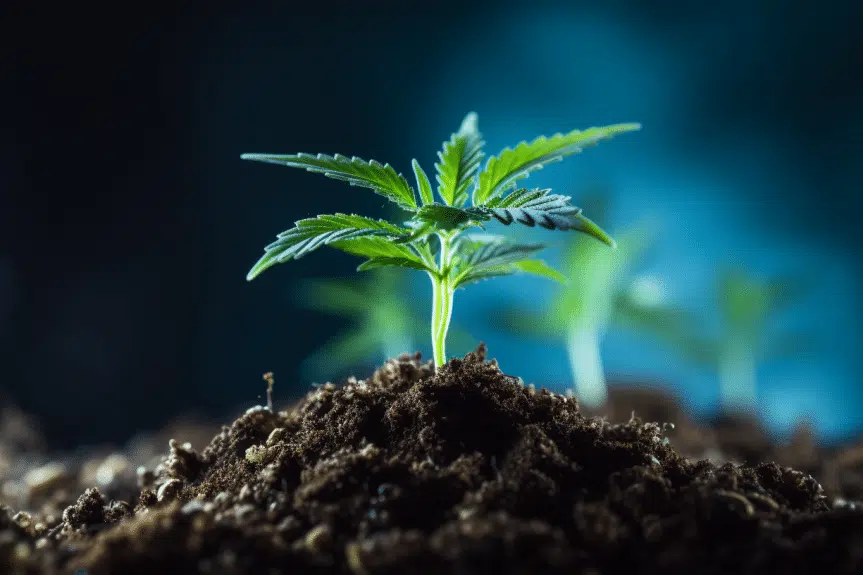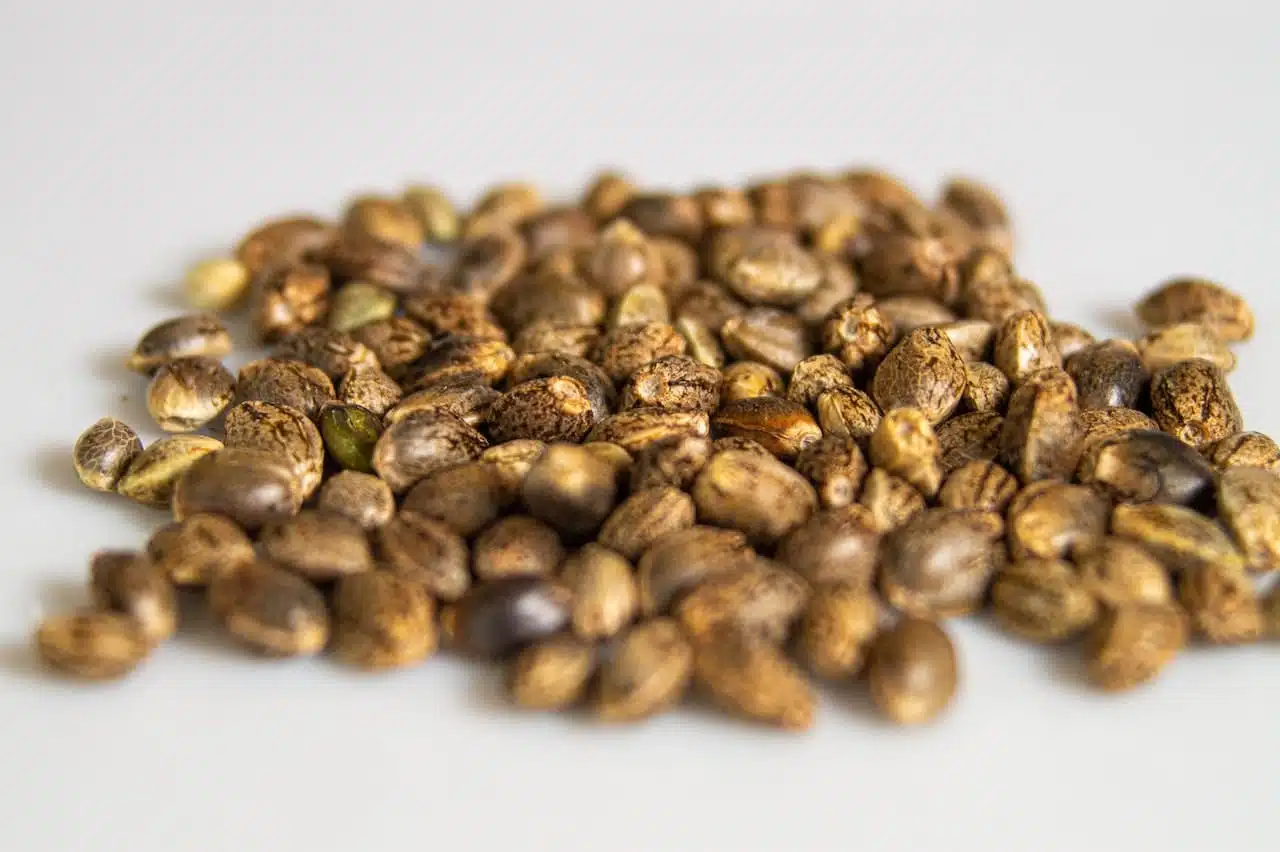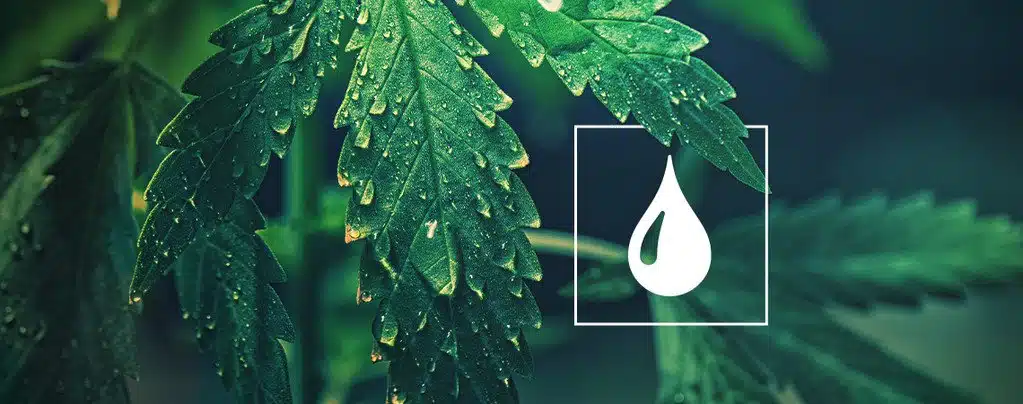Do Autoflowers Produce Seeds?
Yes, autoflowers produce seeds just like regular photoperiod cannabis plants. The fast-growing variety is really no different from regular cannabis plants with gender expression. They are available in male, female, and even feminized autoflower seed forms.
So, unless you grow feminized autoflower seeds, the female autoflower plants will sprout alongside viable male autoflower plants, become pollinated, and produce seeds.
In this article, The Seed Fair team explores how autoflowers produce seeds, how to control the type of seeds your autoflower produces, and how to prevent your autoflowers from producing seeds
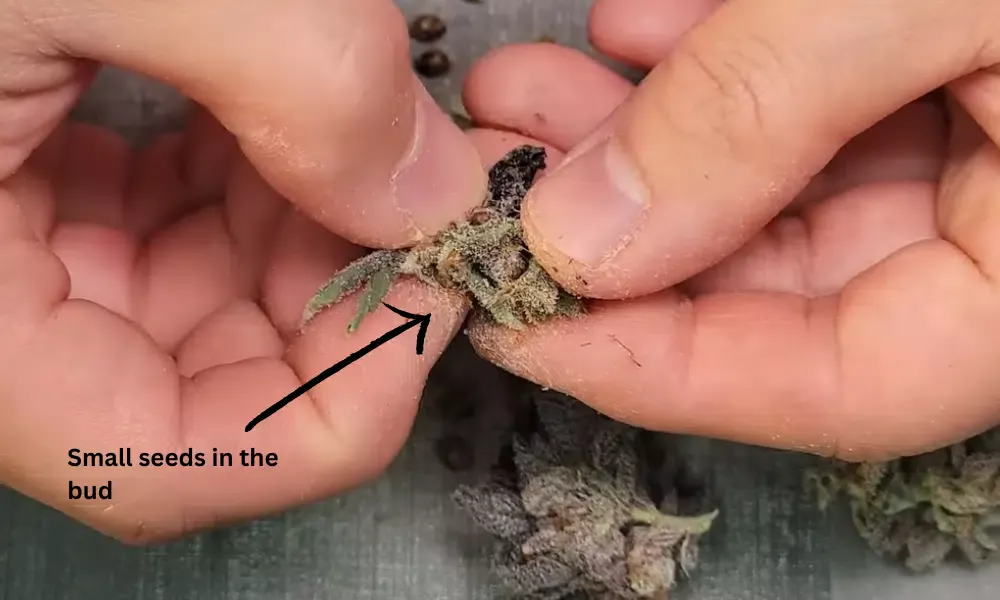
What Are Autoflowering Seeds?
Autoflowering seeds are simply “seeds produced from autoflower plants.” When bred correctly, these seeds would exhibit traits that make autoflowers unique.
Autoflowering seeds can be male, female, or even hermies; just like regular photoperiod cannabis cultivars. But, what makes an Autoflowering seed autoflowering is the presence of the Cannabis ruderalis genetics.
The Cannabis ruderalis genetics is the unique factor that allows autoflowers to flower based on age; and not light schedule.
Most autoflowering seeds we have today are only autoflower hybrids. They contain photoperiod and autoflowering traits.
Three extra facts to note about the autoflowering seeds we have today include:
- They grow faster than regular seeds: Autoflowers are natural fast-growers. Some autoflower seeds speed through their growth cycle and reach harvest in a record 7 weeks, making them ideal for having multiple grow and harvest cycles in one season.
- They can be just as potent as regular seeds: Modern autoflowering seeds can now equal and even rival the potency levels of regular cannabis seeds. Some Autoflowering seeds have THC levels reaching as high as 18-21%.
- They come in various options: Autoflowering seeds are now available in an entire catalog of options for different growing needs: indoor, outdoor, feminized, regular gender, high-THC, etc.
Where Did All Autoflowering Seeds Come From?
Since all Autoflowering seeds contain the Cannabis ruderalis genetics, we’d have to understand the origins of C. ruderalis to really trace where all Autoflowering seeds come from and why autoflowers are the way they are.
Cannabis ruderalis is a cannabis variety that grows wild in the cold regions of Russia and other parts of Eastern and Northern Europe. These regions are typical for short summers and light cycles.
As a result, to survive in these regions, C. ruderalis had to evolve to grow quickly and flower based on age rather than light exposure.
The original Autoflowering seeds didn’t meet the tastes and desires of the average cannabis consumer. These pure ruderalis strains were low-yielding and low potency. So, seed breeders began finding ways to mix ruderalis with the appealing photoperiod indicas and sativas.
But, it wasn’t until the 21st century we got the first commercial-grade Autoflowering strain: the Lowryder.
The Lowryder was a hybrid of Mexican Rudy and Northern Lights and was the first-recorded successful ruderalis cross to yield a high-potency Autoflowering strain.
Since the Lowryder, we’ve had a “marketful” of Autoflowering seed genetics; from high-THC Autoflowering seeds to fully feminized Autoflowering seed strains and even autoflower seeds that do not live up to their claims.
It is therefore important to buy autoflowering seeds from credible, verifiable seed banks or breeders to achieve more guaranteed results when growing Autoflowering seeds.
Do Autoflowering Plants Produce Autoflowering Seeds?
Yes, and No. Since most modern autoflowering plants are already hybrids of photoperiods and ruderalis, the chances of your autoflowering plants producing autoflowering seeds depend on how you pollinate them and what you pollinate them with.
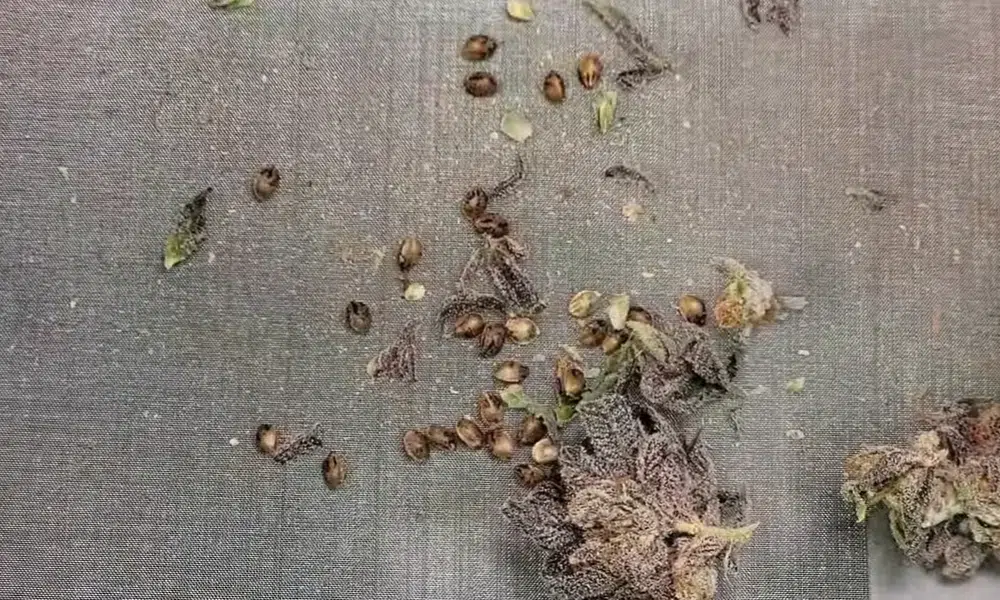
Let’s discuss genetics a bit.
Being Autoflowering is a genetic trait, the same as being photoperiod. However, the Autoflowering trait is recessive (aa), while the photoperiod trait is dominant (AA).
Genetic Combinations
- Pure autoflowering plant: aa
- A cross between autoflowering and photoperiod plant or photoperiod/autoflower hybrid: Aa
- Pure photoperiod plant: AA
Please note: An autoflower hybrid is the same as a photoperiod hybrid. They both contain the same traits (Aa).
When crossing these plants:
- Pure Autoflower (aa) x Pure Photoperiod (AA): The resulting seeds will be autoflower hybrids (Aa).
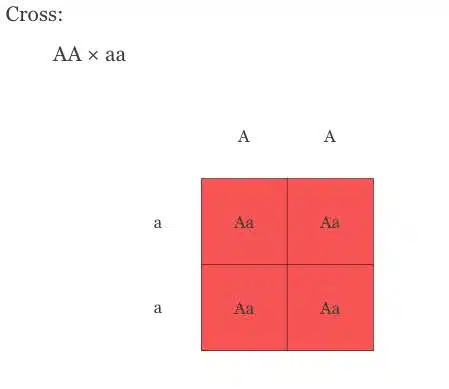
- Photoperiod/Autoflower Hybrid (Aa) x Pure Photoperiod (AA): The resulting seeds will show a mix of pure photoperiods (AA) and photoperiod/autoflower hybrids (Aa)
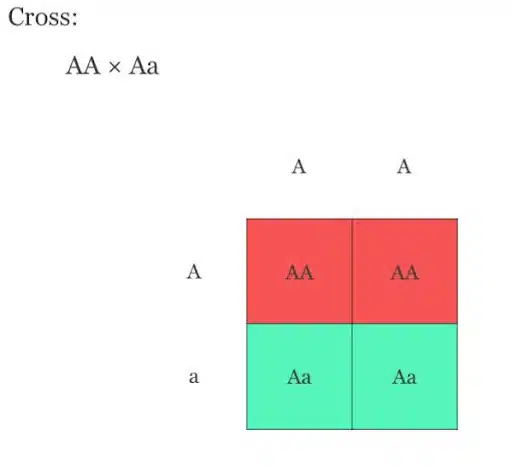
- Pure Autoflower (aa) x Photoperiod/Autoflower Hybrid (Aa): The resulting seeds will have a mix of photoperiod/autoflower hybrids (Aa) and pure autoflowers (aa).
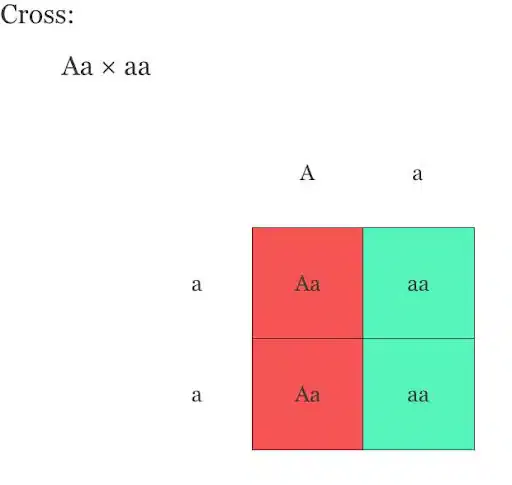
- Photoperiod/Autoflower hybrid (Aa) x Photoperiod/Autoflower hybrid (Aa): The resulting seeds will be a mix of pure photoperiods, photoperiod/autoflower hybrids, and pure autoflowers.
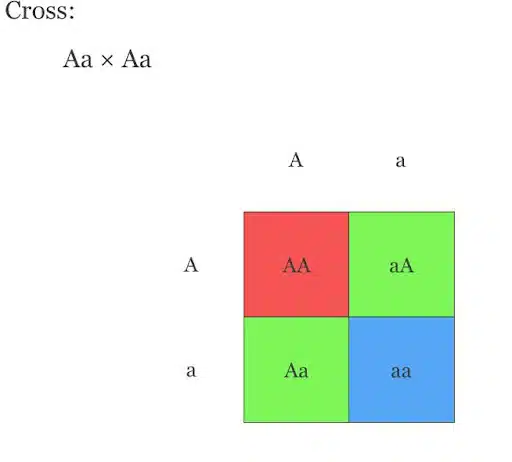
Autoflower seeds that are autoflower/photoperiod hybrids will likely show inconsistencies, in flowering times or light response. For instance, your autoflower plant will flower later than is typical for regular autoflowering plants or respond to light cycles.
The more you cross an autoflower hybrid, the farther you get from achieving an Autoflowering strain with actual Autoflowering traits. Hope this explains why so many modern Autoflowering strains have inconsistent features and why autoflowers are not ideal for typical cultivation methods, like making clones from autoflowers.
To minimize the level of inconsistencies you get from your Autoflowering seeds, opt to buy autoflower seeds from reliable seed banks or breeders.
Can Autoflower Seeds Turn Out to Be Male and Produce A Male Plant?
Most definitely. Autoflower seeds can indeed turn out to be male and produce male plants.
Regular autoflower seeds are gender random. They could split male and female expressions 50:50, 70:30, etc. So, if you bought regular Autoflowering seeds, your autoflower seeds can turn out to be male and sprout into male plants.
Having male autoflowers has its perks, especially if you are breeding autoflowers for seeds. But, if you do not want male plants, you have two options.
First, you can try removing the male sprouts from your crop before pollination begins. However, because you can’t tell the gender of a cannabis seed just by looking at it, you’ll have to wait until the seeds sprout and show gender signs. This could create a problem.
Because regular autoflower seeds are gender random and can produce males to females in different proportions, you might have an unexpected workload of culling to do. Unfortunately now, autoflowers are quick growing, which means there’s only a small window between when the autoflower seeds show their gender and when pollination begins.
Thus, your plants might start blooming and pollinate the females before you completely take out the potential pollinators (the male autoflowers).
Alternatively, there is the second, more preferred option for controlling the risk of having male plants in your cannabis grow: using feminized autoflower seeds.
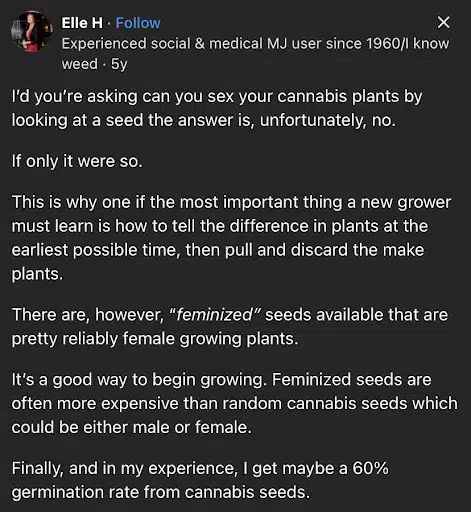
Feminized autoflower seeds are bred to sprout mostly female plants. So, when you grow proper feminized autoflower seeds instead of regular autoflower seeds, you are sure to get more female autoflowers than males. This result is bound to save you time, effort, and money.
You can buy feminized autoflower seeds from a solid seed bank to save time and guarantee the results you’d get. Or, experiment with how to feminize a female autoflower plant yourself and make your own feminized autoflower seeds for your next grow cycle.
Why Did An Autoflower Start Producing Seeds?
It’s really not a bad situation for your autoflower to produce seeds; if you want seeds. But, if you did not pollinate your autoflower and you are certain there are no male autoflowers around, these two are possible reasons your female plant produced seeds without a male:
- Stress
- Bad seed genetics
Stress:
Mild stress can boost cannabinoid levels and even increase yields. But excessive stress is a whole different story.
When a female autoflower experiences too much stress, she perceives it as a survival threat. In response, she becomes hermaphroditic to self-pollinate and produce seeds so her genetic line continues.
Bad genetics:
Not all autoflower seeds are bred or selected carefully enough to remove all potential hermaphroditic traits. As a result, some autoflower seeds are more unstable and prone to becoming hermies, self-pollinating, and producing seeds.
WHAT HAPPENS THEN?
The good thing about autoflower seeds produced due to stress or poor seed genetics is they usually replicate the gender of their parent plant. A female autoflower will produce female autoflower seeds. This makes it one way to get feminized autoflower seeds.
However, since these seeds were produced as a stress response rather than through natural breeding systems, the autoflower seeds you get from these methods might be unstable and prone to becoming hermaphrodites themselves from the start or when exposed to stress.
How To Get Seeds From An Autoflower?
You can get seeds from an autoflower in two ways: self-pollination and cross-pollination.
Self-Pollination
We’ve pretty much covered the basis of self-pollination in the previous section.
Self-pollination is a quick and easy way to get seeds from an autoflower using just one autoflower. The seeds produced from an autoflower through this method are replicas of their parent plant due to the absence of a second parent.
Stress isn’t the only way to induce self-pollination in an autoflower to get seeds. There are even more reliable ways to make this happen.
The method you choose to induce self-pollination in your autoflower determines the genetic stability of the seeds you get from your autoflower.
Cross-Pollination
Cross-pollination requires two autoflowers: a male and a female. This method of obtaining seeds from an autoflower results in more genetically stable but genetically diverse seeds. As a result, choosing healthy parents with desirable traits is absolutely essential when cross-pollinating autoflowers to get seeds.
DIY Autoflower Seed Making
Knowing how to make your own autoflower seeds at home is a major flex. It not only has the potential to save you some money, it also allows you to expand your seed collection with new strains you love.
However, making autoflower seeds at home, and even generally, can get very unpredictable, especially if it is your first time.
So, if you can’t afford the risk of making autoflower seeds yourself or simply do not have the time to try the experiment, consider buying autoflower seeds from reputable seed banks.
But if you are up for an exciting breeding experiment, here’s how you can make your own autoflower seeds at home:
Step 1: Choose Your Pollination Method
Decide on the method that suits your resources and goals:
- Self-pollination is ideal for preserving desirable traits and creating feminized seeds. However, with this method, your autoflower produces only a few seeds.
- Cross-pollination is best for mixing genetic traits. It increases the chances of getting high-quality seeds and producing large volumes of seeds for commercial purposes.
Step 2: Select Your Autoflower Plants
For the self-pollination method, choose one healthy female autoflower plant with the traits you want to preserve.
For the cross-pollination system, select two healthy plants (one male, one female) with desirable traits.
Step 3: Set Up the Ideal Environment
Ensure your growing conditions are in check, including temperature, humidity, and lighting. To control the type of autoflower seeds you get, keep the male and female autoflower plants separated. You can use plastic sheets to enclose each group or grow them in separate rooms.
Step 4: Pollinate at the Right Time
The best time to pollinate autoflowers is during the early flowering phase. At this autoflower growth stage, the flowers are ripe and receptive.
If you will be self-pollinating the autoflowers, induce male parts on the female autoflower plant through cannabis feminization methods, like Rodelization or aspirin. Once the male parts are ready with pollen, brush the pollen to the female parts.
To cross-pollinate an autoflower, collect pollen from the male plant by tapping the pollen sacs into a small paper or container. Then, transfer the pollen to the female pistils using a small brush or cotton swab.
Step 5: Monitor Seed Development
After pollination, keep an eye on the calyx. It takes about four weeks for the autoflower seeds to develop. Once you feel the buds swollen with small lumps or hard spots, that’s a sign your autoflower has seeds.
Step 6: Harvest and Store Your Seeds
You can tell when your autoflower seed is mature by checking for signs it is time to harvest autoflower, or by opening a small sample bud to examine the color of the seeds. Mature seeds are dark, large, firm, and round or teardrop-shaped.
To harvest autoflower seeds, collect the buds and let them dry. Then gently open the buds to gather the seeds without crushing them.
Store the autoflower seeds in a cool, dark place at 40 to 50 degrees Fahrenheit (5 to 10 degrees Celsius) with relative humidity levels between 5 and 10% to prevent mold growth or desiccation.
Conclusion
Breeding autoflowers to produce genetically reliable autoflower seeds can be extremely challenging, especially since most available autoflower seeds are hybrids of photoperiod and autoflower varieties. The more crossings you make from an autoflower, the weaker the traits you love about the plant become, including what makes autoflower autoflower.
However, you can ensure you cultivate healthy Autoflowering plants that meet your cultivation goals by buying autoflower seeds from trusted seed banks.
At The Seed Fair, we specialize in offering strictly feminized Autoflowering seeds bred from high-cannabinoid parent strains. By growing our seeds, you have little to worry about male autoflowers sprouting in your crop and ruining your hopes of high cannabinoid yields.
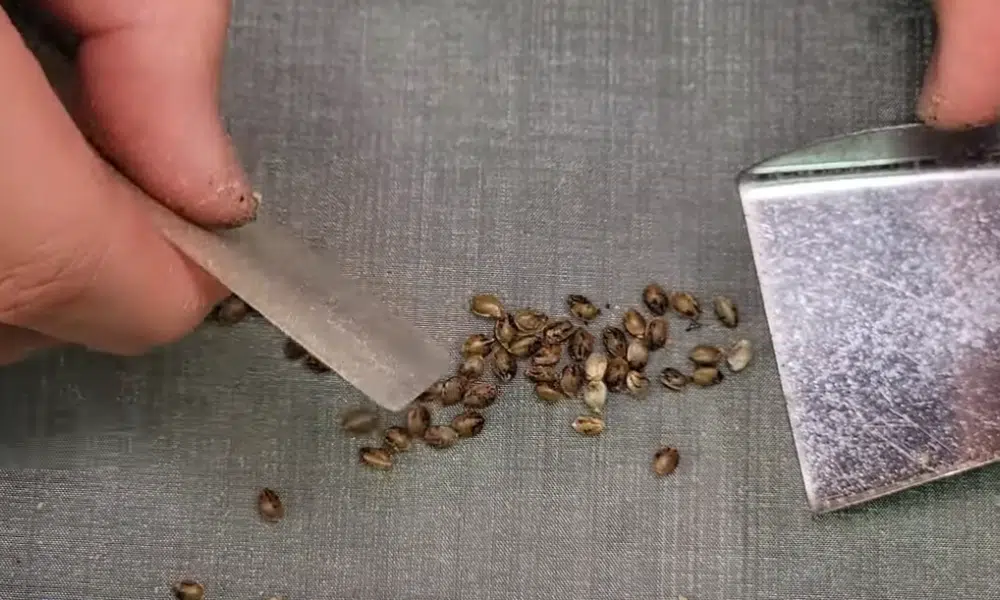
FAQ Section
How many seeds can I get from a single autoflower?
The number of seeds you get from a single autoflower depends on several factors, including pollination methods. A well-pollinated autoflower can produce between 50 to 200 or even more autoflower seeds.
Are all autoflower seeds female?
Unless you’ve specifically purchased feminized autoflower seeds, you’ll likely have a mix of male and female autoflower seeds.
Are autoflowers less potent than photoperiod strains?
No, not anymore. In fact, some autoflowers are now even more potent than some photoperiod strains.
How can I tell if my seeds are autoflower?
You can’t determine if a seed is autoflower until it germinates and begins growing. Once it starts its life cycle, observe for typical signs of an autoflower life cycle to confirm its identity.

